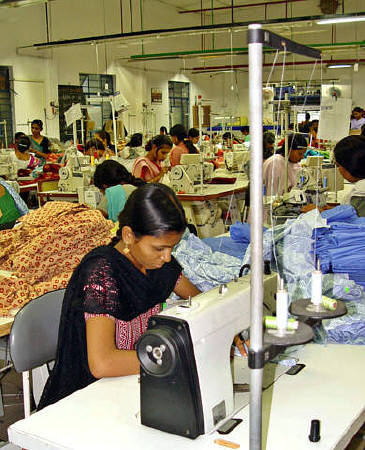
| HOME | EXPORT & IMPORT |TEXTILE ACTS | RESOURCES | DIRECTORY |SITE MAP |
U.S., China open textile agreement discussions
U.S. and Chinese officials have opened talks on a new comprehensive trade agreement aimed at reducing some of the tension over surging textile and apparel imports from the People's Republic of China. The talks, which got under way in San Francisco Aug. 16, could lead to the replacement of the temporary safeguard provisions permitted under China's 2001 WTO accession agreement with longer-term restrictions on numerous categories of Chinese textile and apparel exports. U.S. textile manufacturing organizations applauded the beginning of the negotiations while importer and retailer groups complained that the restrictions could make clothing more expensive for U.S. consumers. The manufacturers said they were encouraged by reports from the talks. "We were pleased that the U.S. government's initial proposal to the Chinese covered a broad range of categories and would last through the end of 2008," the American Manufacturing Trade Action Coalition said. "However, the negotiations are a long way from conclusion, and key details remain unresolved." The Office of the U.S. Trade Representative, the lead agency in the talks, said the negotiations were partly a response to calls by members of Congress for a more comprehensive textile agreement with China. Rep. Robin Hayes, R-N.C., said he changed his vote in favor of the Dominican Republic-Central America Free Trade Agreement, which passed the House by a vote of 217-215 last month, because of administration promises it would provide relief to the U.S. textile industry. "Not until the administration said it would work with the industry on the issue of exploding imports from China was I able to support DR-CAFTA," Hayes said in a statement following the vote. The Committee for the Implementation of Textile Agreements also announced it was delaying a decision on seeking consultations on safeguard petitions for six categories of textile and apparel products until Aug. 31. That announcement and the opening of the San Francisco talks came as the U.S. government announced that U.S. textile and apparel imports from China rose 47 percent in 2005 compared to 2004. As of June 2005, China held a 32 percent share of the U.S. textile and apparel market. U.S. textile manufacturing groups reportedly are pushing for a 7.5 percent limit on the annual growth of numerous categories of textile and apparel products from China, or a slightly lower target than the annual growth rates of 8 percent to 12.5 percent permitted in an agreement concluded by the European Union and China last spring. U.S. importers, on the other hand, have been lobbying for limits of 20 percent to 25 percent annually, according to Laura Jones, executive director of the United States Association of Importers of Textile and Apparel. "We would like to see some kind of agreement guaranteeing that when people place their orders they will get their goods," she was quoted as saying. "The level of 7.5 percent is nothing. You need to address the realities of the potential of the Chinese market." Manufacturing groups maintain, however, that the latest import figures show that Chinese manufacturers continue to use government subsidies and currency manipulation to cut its prices and further dismantle any competition that remains in the United States and thwart garment makers in other countries. "In sensitive apparel categories, some of the price decreases are astounding," said Auggie Tantillo, executive director of the American Manufacturing Trade Action Coalition. He cited cotton trousers as an example. "Year to date through June 2004, the United States imported 11,240,616 pair of cotton trousers from China at an average cost of $10.54 per pair. Year to date through 2005, the United States imported 209,604,072 pair of cotton trousers at an average cost of $4.85 - a price decrease of 54 percent." In contrast, the United States imported 914,636,784 pair of cotton trousers at an average cost of $5.92 per pair to date in 2005, up 0.7 percent from $5.88 per pair during the same period in 2004. "When China can drop its price on cotton trousers by 54 percent while the rest of the world increased 0.7 percent, something is wrong," said Tantillo. "Clearly, China is using unfair trade practices such as direct subsidies, currency manipulation and export tax rebates to artificially lower its prices to monopolize the U.S. apparel market." |
Copyright 2026 Southasianbusiness.org All rights reserved.
|

 Byline:
Forrest Laws Farm Press Editorial Staff
Byline:
Forrest Laws Farm Press Editorial Staff